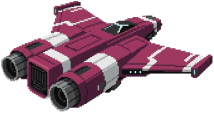Explore >> Select a destination

|
You are here |
www.jendrikillner.com | ||
| | | | |
therealmjp.github.io
|
|
| | | | | Got a new sample ready, this oneshows how you can defer shadow map calculations to a separate screen-space pass using a depth buffer.Check it out on Ziggyware! Comments: sam - Feb 4, 2009 This sample does not works for me. I see the blank screen. My Video card is GF 9800 GT. #### [Alejandro Martinez](http://www.gaspgames.com/www.battletennis.com "amartinez1660@gmail.com") - Feb 2, 2010 1./2. Points taken! 3. That's quite a boost for the shadow map render and sampling (HW PCF or Ati's Fetch4). | |
| | | | |
timur.hu
|
|
| | | | | Previously, I gave you an introduction to mesh/task shaders and wrote up some details about how mesh shaders are implemented in the driver. But I left out the important details of how task shaders (aka. amplification shaders) work in the driver. In this post, I aim to give you some details about how task shaders work under the hood. Like before, this is based on my experience implementing task shaders in RADV and all details are already public information. | |
| | | | |
toji.dev
|
|
| | | | | Brandon Jones - Graphics and XR on the web | |
| | | | |
dylanbeattie.net
|
|
| | | An article from dylanbeattie.net | ||




